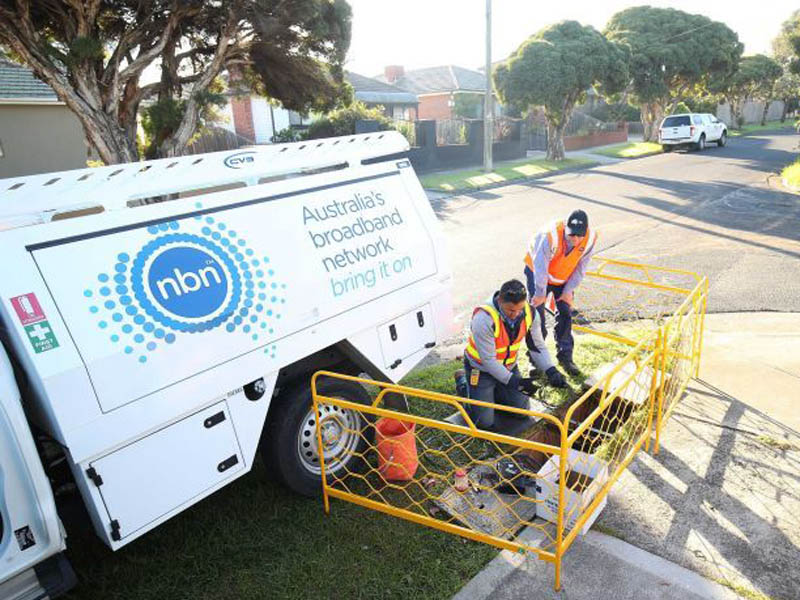NBN Co has released lacklustre first-half results for financial year 2018/19 and the spectre of the roll-out continuing into 2022 is now very real. NBN Co continues to struggle to connect customers in the numbers that it needs to improve its bottom line.
The NBN Co board was set the task of completing the National Broadband Network (NBN) in 2019 and ensuring that all fixed-line customers could receive download connection speeds of 50 Mbps or more. This promise was soon dumped for a requirement “of at least 25 megabits per second to all premises, and at least 50 megabits per second to 90 per cent of fixed line premises as soon as possible”.
It is remarkable that the Coalition Government is prepared to spend nearly $52 billion on a broadband network that delivers less than 50 Mbps to 10 per cent of fixed line users and is struggling to meet demand in regional and remote areas.

The Tokyo Olympics will be broadcast in 8K television and at this years Consumer Electronics Show in Las Vegas the big event was the release of a wide range of 8K televisions. In two years, Australians will be looking at countries with FTTP with envy, including New Zealand.
The first half results highlight that NBN Co has a long way to go before the rollout is completed and NBN Co does not appear to be able to provide everyone with a download connection speed of 25 Mbps or higher.
To add to the problems faced by NBN Co, about half of the NBN is under-performing, with reliability and performance that is reminiscent of 1990s copper technologies. This is a far cry from the reliability and performance needed for Australia to be a world leader in the global digital economy.
On 31 December 2018, there were 8.1 million premises ready to connect to the NBN and 4.6 million with an active service. For NBN Co to achieve a positive position it needs to add about 3 million to 3.5 million premises to the network, and there is growing concern that this goal may now be unachievable due to the government decision to use obsolete copper technologies.
While NBN Co’s total revenue grew to $1.3 billion for the six months to the end of December, this is a long way short of what is required for NBN Co to meet its financial obligations.
For NBN Co to become cash flow positive, it is projected that an ARPU of $51 per month is necessary, and this goal has been pushed back to FY22. In HY18, NBN Co has achieved an ARPU of $45 per month.
It is worth remembering that in the first two years of the NBN rollout, NBN Co was reporting an ARPU of about $42 per month, so the $1 increase in the ARPU over the past year is nothing to shout about.
NBN Co chief executive Stephen Rue is wrong to say that the NBN rollout has less than 18 months to go, because this statement ignores the 18 month co-existence period before the legacy network in an area must be turned off and the time for customers to be connected to the NBN after requesting a NBN service.
Mr Rue, following in the footsteps of former chief executive Bill Morrow, has carefully painted a lemon orange and presented it to the media in the hope that no-one will notice.
Another key consideration is that NBN Co has yet to tackle many of the hard to connect premises, continues to struggle with the HFC rollout, and has begun ignoring problems with the NBN in regional and remote areas.
It is very likely that immediately after the May Federal Election, NBN Co will announce a revised rollout schedule, a further reduction in the HFC footprint, and yet another blow-out in the bottom line.
Whilst the media is focused on other matters, it is important to stress that telecommunications is an essential service and Australia’s future in the global digital economy is dependent on the availability and access to all fibre networks, and improved communications capability in regional and remote areas.
Second best is not good enough, and Australia’s poor global ranking should be a focus for business and industry when considering a position and calls for policy changes in the lead-up to the next election.
NBN Co’s first-half results presentation included a summary of the cost per premises for each of the technologies being used to connect premises to the NBN. If there is a single page in this presentation that highlights why the rest of the presentation should be dismissed as nothing more than a carefully crafted glossy, this page is it.
Internationally, the cost of FTTP rollout has decreased by about 40 per cent as rollouts have progressed. Yet here in Australia, the NBN Co claims, yet again, that the cost of FTTP has increased over time and is now $4,403 per premises.
NBN Co’s business model continues to be the cause of significant network congestion during busy periods, and whilst NBN Co reports that this is now about 45 minutes per day, the reality is that for many homes that have substandard copper connections affected by rain, the overall network performance remains woeful.
At a time when NBN Co will soon face the requirement for a third satellite, improved fixed wireless capacity in regional areas and a strategy to replace the obsolete FTTN and the remaining HFC with FTTP (or FTTC), NBN Co senior management remains mute.
How can NBN Co’s first-half financials be considered to be anything other than a train wreck? Calls for a write down are certain to grow louder, but there is a need to consider the broader picture to get a clear understanding of just how chaotic telecommunications policy is at this time.
Mark Gregory is an Associate Professor in Network Engineering at RMIT University and is the Managing Editor of the Journal for Telecommunications and the Digital Economy
Do you know more? Contact James Riley via Email.

